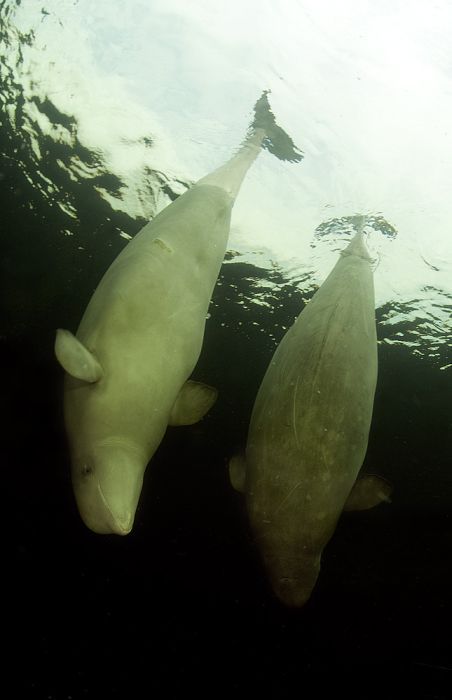|
|
Underwater World With Natalia Avseenko, The White Sea, Russia
|
The White Sea is a water-filled depression in the block of a continental shelf known as the Baltic Shield. Its bottom is very uneven and contains the Kandalaksha Hollow in the northwest and the Solovetsky Islands in the south. Also, the Onega Bay has many small underwater elevations. The opening and the gorlo of the sea are rather shallow, with the depths about 50 metres or less. In addition, there is an underwater ridge in the northern part of the gorlo, resulting in maximum depths of 40 metres in that part. This hinders water exchange between the White and Barents seas. The exchange is however assisted by the tides, which are semidiurnal (rising twice a day), with the amplitude increasing from 1 metre on the south to 10 metres in Mezen Bay. Currents are rather weak in the open seas with the speed below 1 km/h, but they significantly strengthen in the bays. The tidal waves are much faster than the regular currents and reach the speeds of 9 km/h in Mezen Bay, 3.6 km/h in Onega Bay and 1.3 km/h in the Kandalaksha Gulf.
Rivers bring annually about 215 km3 of fresh water, on average, mostly to the Onega, Mezen and Dvina bays. The Northern Dvina River alone may contribute up to 171 km3 in some years, with the Mezen, Onega, Kem and Vyg rivers adding up to 38.5, 27.0, 12.5 and 11.5 km3, respectively. About 40% of this volume is brought during the snow melting in May, and the inflow is minimal in February-March. This inflow raises and lowers the sea level that promotes the water exchange with the Barents Sea. As a result, annually, about 2,000 km3 and 2,200 km3 flow in and out of the White Sea, respectively. The inflow of fresh water in spring decreases the surface salinity in the top 5–10 metre layer to 23‰ (parts per thousand) in the eastern and 26–27‰ in the western parts of the sea, reaching 10–12‰ in Dvina Bay; it also increases the content of silicon and silicates in water, which is a characteristic feature of the White Sea.
Storms are the strongest in October–November. However, small sea depths reduce the wave height to the average of 1 metre, sometimes reaching 3–5 metres. The sea is quiet in July–August.
|
|









